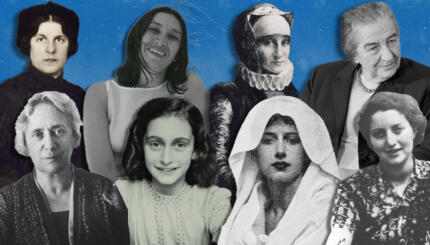The Israelites, like their neighbors, had a keen interest in their origins and history. Aspects of the biblical stories associated with creation, including the creation of man and flood narratives can be found in the myths of Mesopotamia, Egypt, and Canaan.
Similarly, there was also a great concern for recording the present. Legends of ancient heroes, royal annals, and temple records were preserved in Israel as they were throughout the Near East.
Israelite law additionally shared characteristics with neighboring legal cultures Parallels are often noted between the civil and family laws preserved in the Hebrew Bible and law codes (such as the Code of Hammurabi), contracts, and court proceedings recovered from Mesopotamia and Syria.
Wisdom literature represents another shared tradition. Scholars note such close affinity between the biblical Book of Proverbs (22:17-24:22) and the Egyptian text Instruction of Amenemopet that many assume that the latter served as a primary source for the former.

Help us keep Jewish knowledge accessible to millions of people around the world.
Your donation to My Jewish Learning fuels endless journeys of Jewish discovery. With your help, My Jewish Learning can continue to provide nonstop opportunities for learning, connection and growth.
The Israelite concept of monotheism, however, was unique. Though the Israelites acknowledged the presence of other deities, they mocked them and deemed these gods impotent next to YHWH. Neighboring cultures envisioned their deities in pantheons, with individual gods often connected with specific cities and having limited dominion over specific “sciences” (such as love, weapons, and weather). In contrast, the Israelite god was the Creator and Sustainer of the world–YHWH was not bound by any borders.
Another unique aspect of the Israelite perspective was its concern for social justice. While neighboring cultures did not ignore the plight of the poor and disenfranchised (throughout the Near East, for example, kings prided themselves on the attention they give to widows and orphans), the extent and degree to which the demand for social justice resonates throughout the biblical text, especially in the prophetic books, is without parallel in the ancient world.
The arrival of the Greco-Roman empires marked the first concerted effort by a ruling party to impose their own culture upon the Jews. This culture, known as Hellenism, advocated physical beauty, arts, and sciences and organized itself around the polis (city).
There were various reactions to Hellenism among the Jewish population.
Some Jews, including the Egyptian writer Philo of Alexandria (c. 15 BCE-40 CE), attempted to reconcile Judaism with Hellenism, while others reacted against it adopting ideologies, including dualism and radical messianism. Such ideologies figure prominently in the apocalyptic and re-worked biblical material that became abundant beginning in the Second Temple period. The history of this period is recorded in the work of first century historian Josephus, 1 and 2 Maccabees, and the New Testament.
These differences also gave rise to sectarianism. Major Second Temple sects included Pharisees, Sadducees, Essenes and Jewish-Christians. The sects were distinguished by their views on authority, tradition, and essential beliefs, and disagreed about questions like: Is the Oral Law was authoritative? Should priests, sages, or Jesus serve as leaders? Do angels exist and is there an afterlife?
The rabbis assumed the leadership of the Jewish people after the destruction of the second Temple in 70 CE and are often seen as heirs to the Pharisaic school. They continued the process of recording the teachings of their predecessors, which came to be known as the Oral Law and was regarded with as much reverence as the Written Law (Hebrew Bible).
This period witnessed the compilation of two major works of Oral Law, collectively known as the Talmud: the , a collection of rabbinic law edited in 200 CE and the Gemara, a commentary on the Mishnah compiled a few centuries later. At roughly the same time, we witness the rise of midrashic literature, that is, a body of homiletical interpretations of the Torah. Unlike the Talmud, which was organized by subject, midrash follows the order of the Torah, and further connects the Oral and Written Torah.
The rabbis were not prophets, but scholars, who according to historian Robert Seltzer "resembled philosophical sages of the Hellenistic world [seeking] to enlighten and guide students in right living." In this tradition, rather than simply stating the law, rabbinic literature preserves the legal discussion, including minority opinions and conflicting views on virtually every subject.
The study house or bet midrash was the primary rabbinic institution of higher learning. In early rabbinic literature, the bet midrash probably refers to a group of disciples rather than a permanent institution; when a sage died, his school ceased and his students studied elsewhere or began their own schools. Permanent academies began to appear in the 3rd century, in larger cities like Tiberias and Caesarea.


